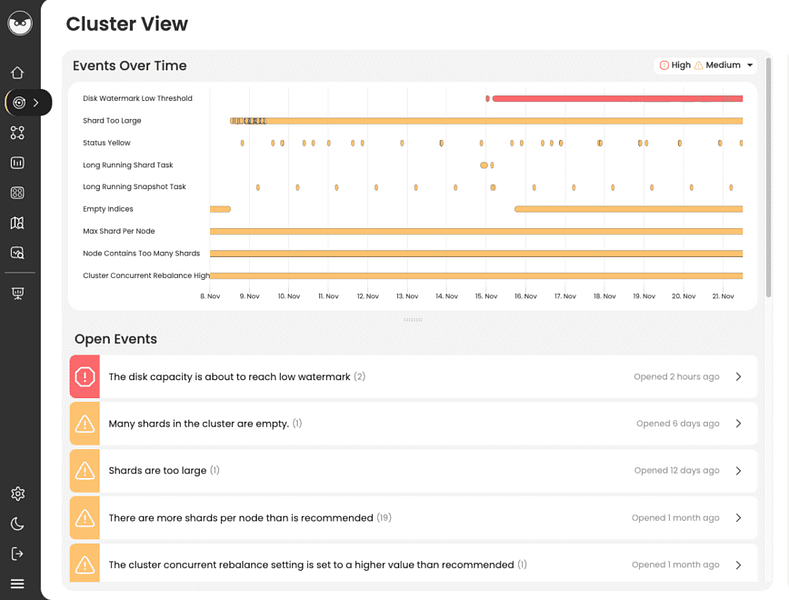Opster Team
Last updated: Nov 1, 2021
| 1 min readIn addition to reading this guide, we recommend you run the Elasticsearch Health Check-Up. It will detect issues and improve your Elasticsearch performance by analyzing your shard sizes, threadpools, memory, snapshots, disk watermarks and more.The Elasticsearch Check-Up is free and requires no installation.
In addition to reading this guide about Elasticsearch cluster concurrent rebalance, we recommend you run the Elasticsearch Health Check-Up. It will detect issues and improve your Elasticsearch performance by analyzing your shard sizes, threadpools, memory, snapshots, disk watermarks and more.
The Elasticsearch Check-Up is free and requires no installation.
What it means
The cluster concurrent rebalance setting determines the maximum number of shards which the cluster can move to rebalance the distribution of disk space requirements across the nodes at any one time.
When moving shards, a shard rebalance is required in order to rebalance the disk usage requirements across the clusters. This rebalance uses cluster resources. Therefore, it’s advisable to reduce the concurrent rebalance setting to limit the number of shards that can be moved, so that the cluster doesn’t use up too many resources moving shards at any one time. The default value for this setting is 2.
If, on the other hand, the concurrent rebalance setting is too low, the cluster may not be able to rebalance shards at all. This could cause some nodes to be unable to allocate shards due to full disks even if there is space available on other nodes. This could result in the cluster going yellow or red and not being able to write new data to certain indices.
How to resolve it
Check the current cluster settings.
GET _cluster/settings
If necessary, change the concurrent rebalance settings. Remember that the default value is 2.
PUT _cluster/settings
{
"transient": {
"cluster.routing.allocation.cluster_concurrent_rebalance": 2
}
}Find & fix Elasticsearch problems
Opster AutoOps diagnoses & fixes issues in Elasticsearch based on analyzing hundreds of metrics.
Fix Your Cluster IssuesConnect in under 2 minutes

Adam Bregenzer
CTO at Groupsense





